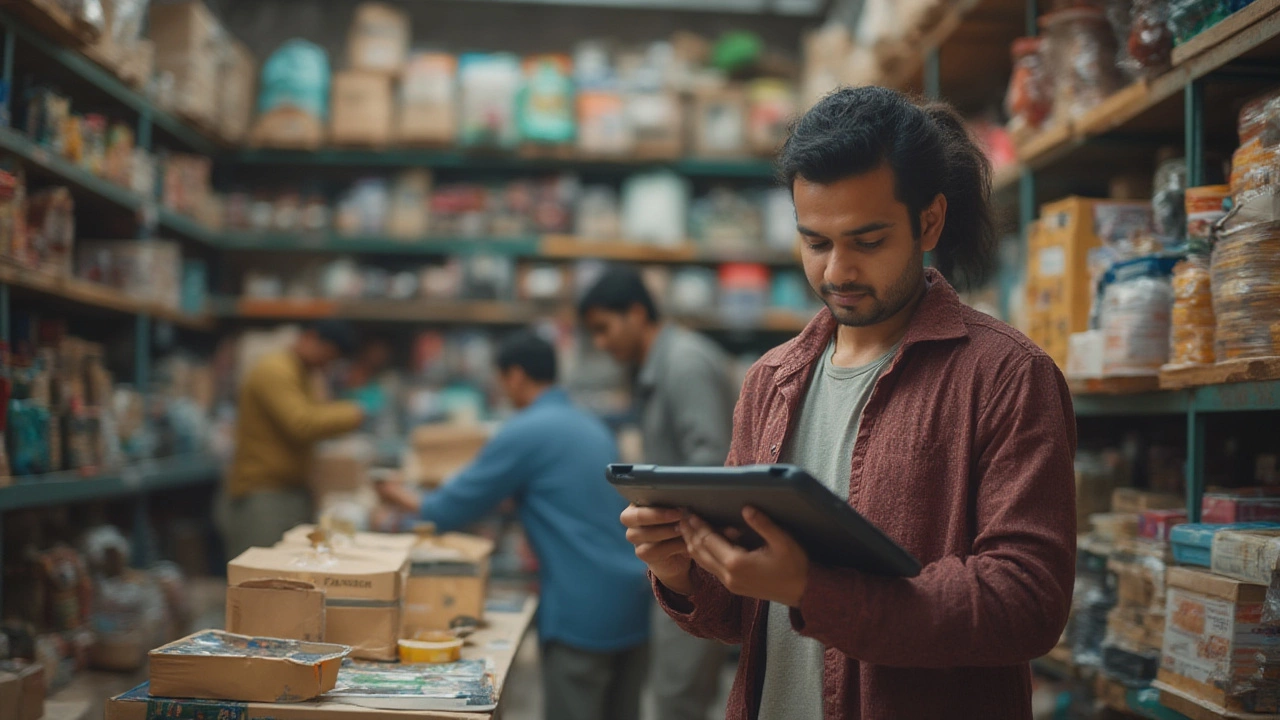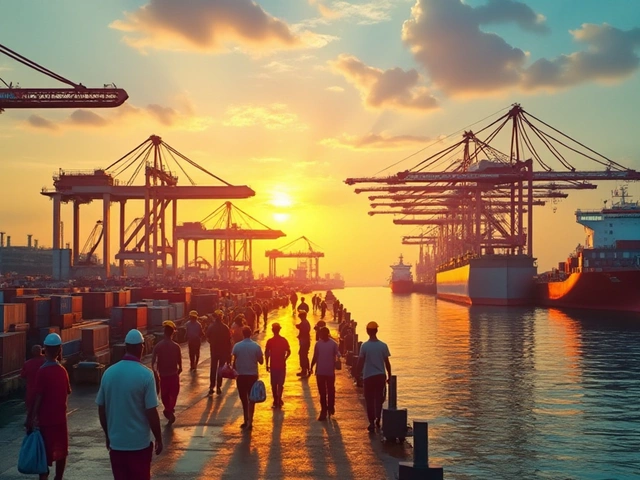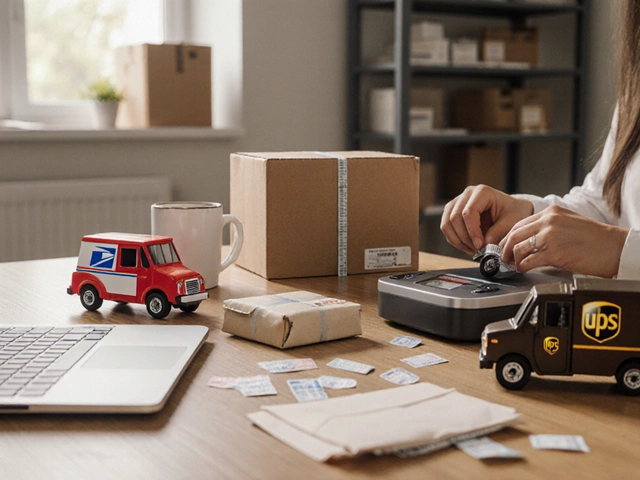You can order toilet paper, a tent, or even a waffle iron at 2 a.m. in your pajamas and get it delivered to your door in Toronto by lunchtime. Sounds epic for us night owls, right? But after helping my son Everett search for yet another birthday gift online and watching Luna bark at every package dropoff, I started thinking: has e-commerce really made life better, or are we swapping one headache for another?
E-Commerce Convenience: The Double-Edged Sword
Online shopping is like pizza delivery for every part of life. That level of convenience can't be ignored. You need a replacement charger? Want locally roasted coffee beans shipped from across the country? It’s all at your fingertips. In 2024, Canadians alone spent over $86 billion on e-commerce, according to Statistics Canada. That number grows every year. It’s not just the money—it’s the time saved. A parent on the go doesn’t have to battle traffic or stand in line with a cranky kid. People with mobility challenges use e-commerce for access they never had. And the 24/7, always-open stores? That’s a lifesaver. But convenience can also push us to expect everything instantly—one-day shipping, same-day delivery, and the like. Retailers bend over backward to meet these demands, and sometimes workers pay the price with intense workloads. Plus, the instant gratification can turn us into impulse buyers. You meant to buy new socks but ended up with an inflatable kayak and five LED flashlights "just in case." It all arrives at your door—but sometimes, so does buyer’s remorse. Businesses, especially small ones, also face nonstop pressure to keep up, update websites, and compete with global giants running on razor-thin margins.
The Logistics Puzzle: What Happens Behind the Scenes
Each click on “Buy Now” sets off an incredible chain reaction. The product jumps from a warehouse (maybe somewhere out by Mississauga) to trucks, planes, or even cargo ships. If everything lines up, you can track your order in real time, watch it snake across the city, and get a text minutes before it shows up on your porch. Here’s a fun fact—Canada Post delivered over 315 million parcels in 2023. Think of all those delivery vans zigzagging through the streets. Companies race to automate warehouses with robots and AI-powered inventory systems, hoping to shave off seconds and cut costs. Logistics software has become one of the fastest-growing budget lines for e-commerce businesses. But there’s a darker side too. Increased shipping means extra packaging, more boxes, and more emissions from delivery trucks. According to a study from the University of Toronto in 2023, the carbon footprint of e-commerce deliveries in Toronto alone was equivalent to putting almost 70,000 extra cars on the road for a year. Then there’s the return problem. Up to 30% of online orders are sent back, which means double the shipping, wasted packaging, and sometimes unsellable products headed straight to landfills. Still, some companies have started using electric vehicles, recyclable packaging, or pickup lockers to cut down on their environmental impact. Here’s a quick look at the scale of e-commerce logistics in Canada from last year:
| Year | Total E-Commerce Spend (CAD) | Parcels Delivered | Return Rate |
|---|---|---|---|
| 2023 | $86.2B | 315 Million | 29% |

The Impact on Traditional Retail and Local Communities
It feels like you can get almost anything online, but have you noticed some old favorite shops downtown have vanished? Traditional retail has been rocked by the e-commerce boom. While big brands open online stores and ride the digital wave, small businesses without a strong web presence are often left behind. Shopping centers, once packed in December, sometimes look deserted except for a few last-minute shoppers. The change is obvious here in Toronto—just take a walk Queen Street West or any old neighborhood strip. But it’s not all bad news. Some local shops have found clever ways to compete—offering in-store experiences you can’t stream, “buy online, pick up in store” options, or ultra-fast local delivery. A bakery we love in our neighborhood started offering online ordering during the pandemic and now ships shortbread Canada-wide. E-commerce also opens up the market for small creators. Artists, crafters, and indie brands reach national or global audiences without paying for a prime storefront. That’s a game changer if you sell custom dog collars or handmade soap. Even still, the massive reach of global e-commerce giants—yes, you know who they are—can overshadow smaller brands. Shipping costs, platform fees, and digital ad prices keep rising. For small shops, just getting noticed in the online crowd is a battle on its own.
Consumer Power: More Choices, New Problems
There’s no denying it—e-commerce gives consumers power in ways that would have sounded wild in the ‘90s. You can compare a hundred model toasters in an instant, read reviews from people like you (including rants about toasted bagel settings), and price-shop without even getting off the couch. You can email customer service in the middle of the night. When buying big stuff, like electronics or furniture, shoppers are more informed than ever. But choice can get overwhelming. Decision fatigue is real. Sometimes you end up scrolling for hours, paralyzed by too many options. And while reviews help, sorting fake from real isn’t always easy. Online shopping is also built on data—every click, every cart abandonment is tracked, crunched, and used to target you with more precise ads. Some folks don’t mind. Others find it intrusive, especially with stories about leaks and data abuse. Privacy policies are long and slippery. When you shop for your kid’s school backpack, the ad follows you all week. There’s also the risk of scams or dodgy third-party sellers. Even with big platforms, stories pop up—people getting sent rocks instead of laptops, or returns going missing. For a safe experience, stick to trusted stores, check site security, and use payment methods with buyer protection.

Where E-Commerce Goes Next: Tips for Smarter Shopping
As e-commerce evolves, so do the tools and strategies. Today, advances like drone delivery tests in Canadian suburbs and AI-powered product recommendations are reality, not science fiction. Voice commerce is on the rise—kids these days can order cereal by talking to their smart speaker (which is both impressive and terrifying for parents like me). For businesses, personalization is key, but responsible handling of our data is even more important. Expect more regulation and focus on consumer privacy in coming years. Here are a few tips I use myself, especially when shopping for my family or friends:
- Make a list before browsing. It’s easier to stay focused and avoid impulse buys.
- Check site reviews and stick to reputable sellers, especially with big-ticket stuff.
- Compare final prices with shipping, returns, and taxes included.
- Use credit cards with solid fraud protection or digital wallets with buyer guarantees.
- Be careful sharing personal info—read privacy settings, even if it’s boring.
- Give local shops with online ordering a try. Many offer curbside pickup or next-day delivery.
- Consider eco-friendly options, like bundled orders to cut down packaging waste.
E-commerce isn’t going away. It’s woven into how we shop, work, and connect. Sure, there are bumps—environmental concerns, privacy questions, and the slow death of some brick-and-mortar traditions. But with a little common sense and some new habits, you can make the most of what e-commerce offers, without losing sight of what really matters. After all, real life doesn’t come in a box.





